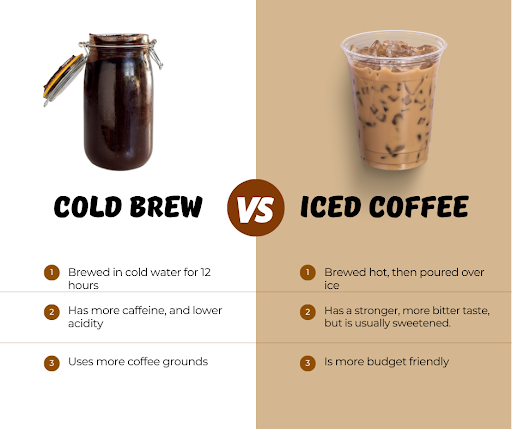
Exploring Cold Brew Methods: Machines vs. DIY
When I first started making cold brew at home, I relied on the simplest tools—a mason jar and a fine mesh sieve. While this minimalist approach worked, it had its challenges, like uneven brewing and stray grounds in my cup. Over time, I discovered cold brew machines, which significantly streamlined the process.
Why Consider a Cold Brew Machine?
Using a cold brew machine doesn’t mean sacrificing the authenticity of homemade coffee. Instead, it simplifies the process and ensures consistency:
- Ease of Use: Machines often feature built-in filters, so you don’t have to fuss with cheesecloth or strainers.
- Consistent Results: They maintain the right proportions and brewing conditions, reducing the chances of over-extraction.
- Time-Saving: Many machines are designed for quick setup and easy cleaning, ideal for busy mornings.
- Customizable Brewing Strength: Machines often allow you to adjust the coffee-to-water ratio effortlessly.
Personal Experience: The Convenience of a Cold Brew Machine
A year into my cold brew journey, I purchased an OXO Brew Compact Cold Brew Coffee Maker. At first, I was skeptical—would this gadget really improve the process, or was it just another kitchen contraption? But after a few uses, I was pleasantly surprised.
What I Loved:
- The built-in spout made pouring easy, with no spills or mess.
- The brewing container had clear measurement markers, which simplified adjusting the coffee-to-water ratio.
- Cleanup was a breeze. No more wrangling with cheesecloth or scrubbing jars.
While the upfront cost was more than my DIY setup, the time and effort I saved made it worthwhile. Plus, the machine produced a smoother concentrate, free from the fine sediment that sometimes slipped through my homemade filters.
When I Still Go DIY: On camping trips or vacations, I revert to the jar-and-filter method. It’s good to have a flexible skill set, and the simplicity of making cold brew with basic tools keeps me connected to the craft.
Cold Brew Variations to Try at Home
Cold brew’s versatility is one of its greatest strengths. Here are some variations to keep your coffee routine exciting:
1. Cold Brew Tonic
A refreshing option for summer, this combines cold brew concentrate with tonic water and a twist of citrus. The bitter-sweet profile is a unique take on traditional iced coffee.
2. Cold Brew Lattes
Mix your concentrate with steamed or frothed milk for a creamy, cafe-style latte. Add a dash of vanilla or caramel syrup for extra flavor.
3. Nitro Cold Brew
While it requires a specialized setup, infusing cold brew with nitrogen creates a creamy, beer-like texture. Some machines even offer this feature for enthusiasts.
4. Spiced Cold Brew
Add spices like cinnamon, cardamom, or nutmeg during the steeping process for a warm, aromatic twist.
5. Cold Brew Cocktails
Use your cold brew concentrate as a base for coffee-inspired cocktails. Combine it with vodka, coffee liqueur, and cream for a rich, indulgent drink.
Cold Brew for Different Lifestyles
Cold brew isn’t just a beverage; it’s a lifestyle enhancer. Here’s how it fits into various routines:
For Busy Professionals
Cold brew concentrate can be prepped in large batches and stored in the fridge. In the morning rush, simply dilute, add ice, and go.
For Fitness Enthusiasts
Cold brew’s caffeine content can act as a pre-workout boost. Mix it with a protein shake for a powerful, energizing drink.
For Homebodies
Use cold brew as a base for creative experiments, from coffee-infused desserts to DIY coffee ice cubes for iced lattes.
For Minimalists
The simplicity of cold brew aligns with a minimalist lifestyle. All you need are quality beans, water, and time to create a drink that rivals professional cafes.
Personal Insights: Balancing Flavor and Convenience
One of the biggest lessons I’ve learned from making cold brew is the importance of balance—not just in flavor but in the effort you put in. When I have time, I enjoy crafting my cold brew manually, experimenting with different beans and steeping times. It’s meditative, almost like a ritual.
But on busy weekdays, I appreciate the practicality of my cold brew machine. It delivers consistent results with minimal effort, letting me enjoy quality coffee without sacrificing my schedule. I like to think of the machine as a tool that complements my brewing hobby rather than replacing it.

Common Pitfalls When Making Cold Brew
To truly master cold brew, avoid these common mistakes:
1. Using the Wrong Grind Size
A fine grind can lead to over-extraction and a bitter taste. Stick to a coarse grind, similar to sea salt.
2. Neglecting Steeping Time
Under-steeping results in a weak brew, while over-steeping can taste overly bitter. Experiment within the 12–24-hour range to find your sweet spot.
3. Skipping Filtration
Failing to strain the concentrate properly leaves a gritty residue. Use high-quality filters or a machine with a built-in filtration system.
4. Storing Improperly
Always store cold brew concentrate in an airtight container in the fridge. Exposure to air can degrade the flavor.
5. Ignoring Water Quality
Cold brew is 98% water, so filtered water is essential for a clean, pure taste.
Experimenting with Cold Brew Recipes
Over time, I’ve enjoyed tailoring my cold brew recipes to suit different occasions. Here’s a personal favorite:
Maple Vanilla Cold Brew Recipe
- Ingredients:
- 1 cup cold brew concentrate
- ½ cup milk (or plant-based alternative)
- 1 tablespoon pure maple syrup
- ½ teaspoon vanilla extract
- Ice cubes
- Instructions:
- Fill a glass with ice.
- Combine cold brew concentrate, milk, maple syrup, and vanilla extract.
- Stir well and enjoy.
This drink feels indulgent yet is surprisingly simple to make. It’s my go-to when I want a treat without leaving home.
Conclusion
Cold brew coffee offers a versatile and rewarding experience, whether you prefer a hands-on brewing method or the convenience of a machine. With its smooth flavor and adaptability, it caters to coffee lovers of all types. By experimenting with beans, ratios, and brewing styles, you can discover a world of flavors that reflect your unique tastes.
For me, the journey from DIY cold brew to using a dedicated machine has been both educational and enjoyable. Each method has its charm, and both have a place in my coffee routine. Whether you’re just starting or looking to refine your technique, cold brew coffee is a craft worth exploring.
FAQ: Cold Brew Coffee
Q: Do I need a cold brew machine to make cold brew?
A: No, a mason jar and a filter can work perfectly. However, a machine can simplify the process and provide more consistent results.
Q: Can I reuse coffee grounds for a second batch?
A: It’s not recommended. Reused grounds produce a weaker, less flavorful brew.
Q: What’s the best grind size for cold brew?
A: A coarse grind, similar to sea salt, is ideal for preventing over-extraction.
Q: Can I brew cold brew faster by steeping at room temperature?
A: While room temperature speeds up extraction slightly, it’s better to steep in the fridge for a cleaner taste.
Q: Is cold brew healthier than regular coffee?
A: Cold brew’s lower acidity makes it gentler on the stomach, but both options have similar nutritional profiles.
Q: How do I make cold brew stronger?
A: Use a higher coffee-to-water ratio or extend the steeping time.
Q: Can I add flavors during the brewing process?
A: Yes, you can steep ingredients like cinnamon sticks or vanilla pods along with the coffee grounds.
Q: Why does my cold brew taste bitter?
A: Over-extraction from fine grinds or excessive steeping time can cause bitterness. Adjust your method accordingly.
Q: What’s the difference between cold brew and iced coffee?
A: Iced coffee is brewed hot and cooled, while cold brew is made by steeping grounds in cold water for an extended time.
Q: Is cold brew more caffeinated than regular coffee?
A: Cold brew concentrate is stronger, but diluting it to serving strength makes it comparable to regular coffee.